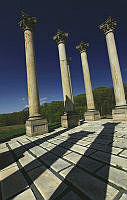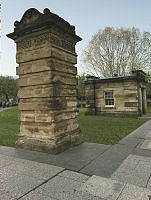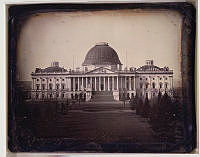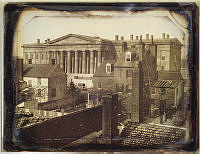Capitol Columns, National Arboretum
This photograph of the Capitol Columns in the National Arboretum was taken by Martin Radigan. These Corinthian columns sit on a natural knoll in the Ellipse Meadow. Originally part of the East Portico of the Capitol in 1828 , these columns were dwarfed by the Capitol dome when it was completed in 1864. The dome was much larger than the designer intended, and additions were made to adequately support it. These Aquia sandstone columns were moved to the National Arboretum in the 1980s.



